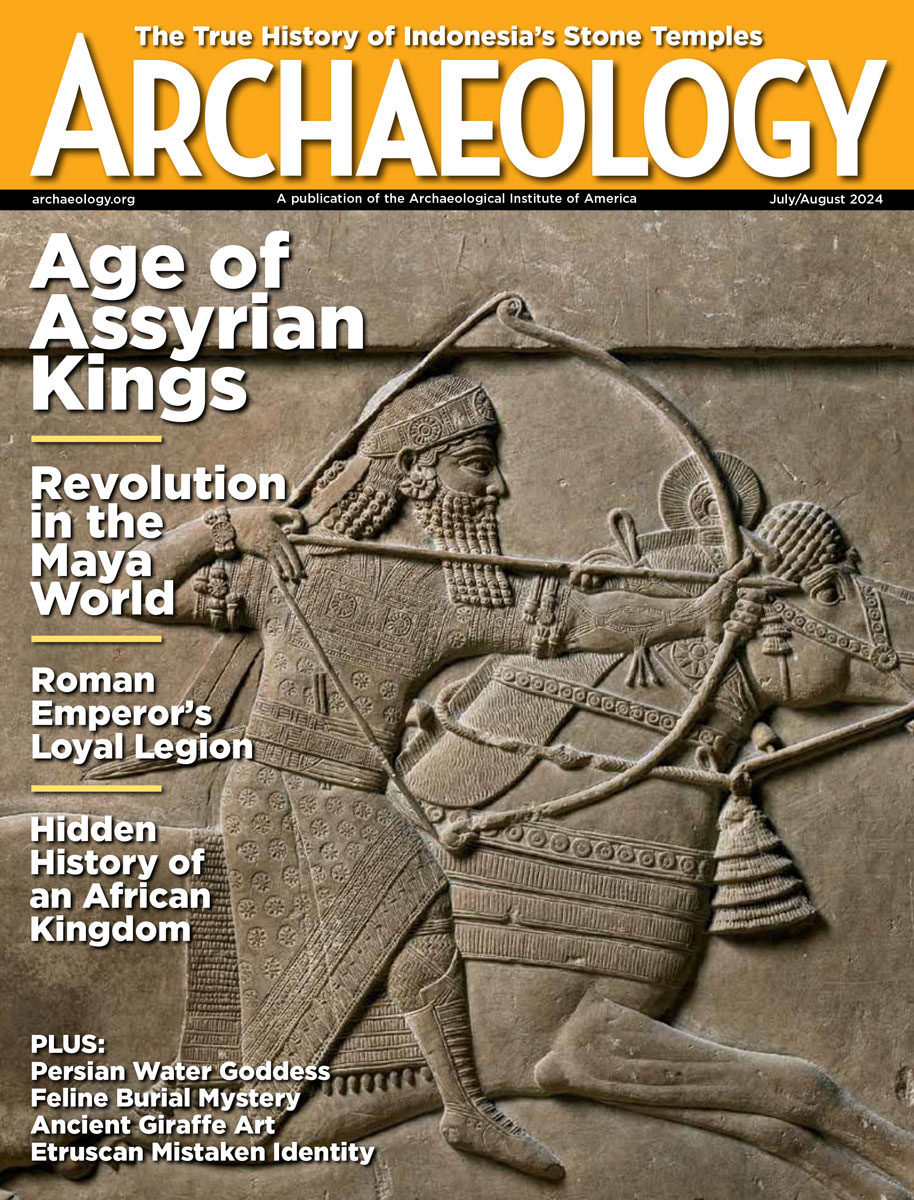Thursday, April 26
April 26, 2012
Plans are being made to excavate a shipwreck in the Patuxent River that archaeologists think could be the USS Scorpion, built in 1814 as the flagship of the Chesapeake Bay Flotilla, and scuttled by the Navy to keep it out of British hands. A hurricane that occurred in August of 1814 covered the ship with protective sediment. In anticipation of recovering well-preserved artifacts, a cofferdam will be built around the wreck in order to drain off the water and create a dry archaeological site. “In a lot of shipwrecks, you’ll find the wood has been destroyed by marine organisms. And in more saltwater environments, you may only have the very bottom of the hull preserved. But this is a time capsule … when we pulled out a pair of surgical scissors last year, they were pristine, and still looked sharp,†said Bob Neyland, a Navy underwater archaeologist.
A third-century A.D. shipwreck discovered in shallow water off the west coast of Sicily was carrying a cargo of walnuts, figs, olives, wine oil, and fish sauce from North Africa to Rome when it sank. But it was also carrying small, tube-shaped terra cotta tiles that were used by Roman builders in vaulted ceilings. “It was a somewhat tolerated smuggling activity, used by sailors to round their poor salaries. They bought these small tubes cheaper in Africa, hid them everywhere within the ship, and then re-sold them in Rome,†said Sebastiano Tusa, Sicily’s Superintendent of the Sea Office.
In the Messinia region of Greece, archaeologists have found a small temple that had been demolished, and a newer one built on top of it, opposite the temple of Epicurean Apollo. Architectural tools, a bronze figurine, and sharp spears were uncovered. “That enables us to conclude that the temple was dedicated to a divine entity of war,†said Xeni Arapogianni of the 38thEphorate of Antiquities. He thinks the small temple may have been constructed in the sixth century B.C. by the Spartans, when they conquered Messinia.
The newly restored Hathor temple on the Egyptian island of Philae will reopen next month. Its deteriorated stone blocks have been replaced, and its walls have been raised. The temple, which faces the Nile River, is decorated with reliefs and was built by Ptolemy VI.
- Comments Off on Thursday, April 26
Wednesday, April 25
April 25, 2012
Three University of California professors have filed a lawsuit to block the transfer of two human skeletons to a Kumeyaay tribe for burial. The 10,000-year-old skeletons were discovered in 1976 on the property of the University of California, San Diego. The researchers say that tests have shown that the two people ate primarily seafood, unlike the ancient Kumeyaay, and that their burial practices were also different. DNA tests have not been conducted. Twelve bands of Kumeyaay have also filed a lawsuit, asking for the remains to be handed over. “What we’re saying is that these are Native American remains. But even if someone says they are not, they were found on aboriginal lands. They go to the Kumeyaay,†said Dorothy Alther, an attorney for the Kumeyaay Cultural Repatriation Committee.
A skeleton known as Young Hol Chan II is missing from a cenote in Mexico’s Yucatán Peninsula. The skeleton is estimated to be at least 10,000 years old and laid to rest when water levels were much lower and the cenote was dry. Officials from Mexico’s National Institute of Anthropology and History are searching the nearby area of Tulum for the remains, and asking residents to be on the lookout. The bones of elephants and giant sloths have also been found in the cenote.
Earlier this month, federal agents filed a lawsuit against Sotheby’s New York for the return of a 1,000-year-old sculpture of a Hindu warrior known as the Duryodhana to Cambodia, where its feet remain at the temple of Prasat Chen. A judge has ruled that the statue should remain at Sotheby’s where it is safely housed. Another warrior figure, the Bhima, is now at the Norton Simon Museum in Pasadena, California. The Bhima once stood opposite the Duryodhana at the temple, where its feet were also left behind. The two statues may have been plundered during Cambodia’s years of civil war.
Beachcombers have descended upon Fort Lauderdale’s South Beach Park, where musket balls, gun flints, and uniform buttons dating to the nineteenth century have been found at the site of the original Fort Lauderdale, which was built during the Second Seminole War. Florida’s officials are trying to figure out how to protect the artifacts. “A sign would just remind people that these cultural resources are public property, and taking them could be a felony,†said archaeologist Bob Carr.
Residents of the Isles of Scilly, located off the coast of southwest England, are being asked to help record coastal archaeological sites before they erode into the sea. On St. Mary’s Island, objects from the Bronze Age can be seen jutting out of a cliff, and Neolithic pottery has been found at a quay on St. Martin’s Island. Cornwall Council archaeologist Charlie Johns wants to get the volunteers trained and out to work, because artifacts are lost from the islands’ cliffs every stormy winter.
- Comments Off on Wednesday, April 25









